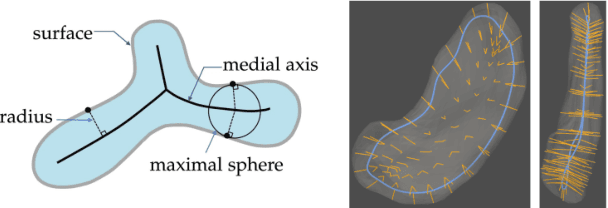Beatriz Paniagua
Automated external cervical resorption segmentation in cone-beam CT using local texture features
Jan 09, 2025



Abstract:External cervical resorption (ECR) is a resorptive process affecting teeth. While in some patients, active resorption ceases and gets replaced by osseous tissue, in other cases, the resorption progresses and ultimately results in tooth loss. For proper ECR assessment, cone-beam computed tomography (CBCT) is the recommended imaging modality, enabling a 3-D characterization of these lesions. While it is possible to manually identify and measure ECR resorption in CBCT scans, this process can be time intensive and highly subject to human error. Therefore, there is an urgent need to develop an automated method to identify and quantify the severity of ECR resorption using CBCT. Here, we present a method for ECR lesion segmentation that is based on automatic, binary classification of locally extracted voxel-wise texture features. We evaluate our method on 6 longitudinal CBCT datasets and show that certain texture-features can be used to accurately detect subtle CBCT signal changes due to ECR. We also present preliminary analyses clustering texture features within a lesion to stratify the defects and identify patterns indicative of calcification. These methods are important steps in developing prognostic biomarkers to predict whether ECR will continue to progress or cease, ultimately informing treatment decisions.
Fitting Skeletal Models via Graph-based Learning
Sep 09, 2024Abstract:Skeletonization is a popular shape analysis technique that models an object's interior as opposed to just its boundary. Fitting template-based skeletal models is a time-consuming process requiring much manual parameter tuning. Recently, machine learning-based methods have shown promise for generating s-reps from object boundaries. In this work, we propose a new skeletonization method which leverages graph convolutional networks to produce skeletal representations (s-reps) from dense segmentation masks. The method is evaluated on both synthetic data and real hippocampus segmentations, achieving promising results and fast inference.
* This paper was presented at the 2024 IEEE International Symposium on Biomedical Imaging (ISBI)
MedShapeNet -- A Large-Scale Dataset of 3D Medical Shapes for Computer Vision
Sep 12, 2023



Abstract:We present MedShapeNet, a large collection of anatomical shapes (e.g., bones, organs, vessels) and 3D surgical instrument models. Prior to the deep learning era, the broad application of statistical shape models (SSMs) in medical image analysis is evidence that shapes have been commonly used to describe medical data. Nowadays, however, state-of-the-art (SOTA) deep learning algorithms in medical imaging are predominantly voxel-based. In computer vision, on the contrary, shapes (including, voxel occupancy grids, meshes, point clouds and implicit surface models) are preferred data representations in 3D, as seen from the numerous shape-related publications in premier vision conferences, such as the IEEE/CVF Conference on Computer Vision and Pattern Recognition (CVPR), as well as the increasing popularity of ShapeNet (about 51,300 models) and Princeton ModelNet (127,915 models) in computer vision research. MedShapeNet is created as an alternative to these commonly used shape benchmarks to facilitate the translation of data-driven vision algorithms to medical applications, and it extends the opportunities to adapt SOTA vision algorithms to solve critical medical problems. Besides, the majority of the medical shapes in MedShapeNet are modeled directly on the imaging data of real patients, and therefore it complements well existing shape benchmarks comprising of computer-aided design (CAD) models. MedShapeNet currently includes more than 100,000 medical shapes, and provides annotations in the form of paired data. It is therefore also a freely available repository of 3D models for extended reality (virtual reality - VR, augmented reality - AR, mixed reality - MR) and medical 3D printing. This white paper describes in detail the motivations behind MedShapeNet, the shape acquisition procedures, the use cases, as well as the usage of the online shape search portal: https://medshapenet.ikim.nrw/
Skeletal Point Representations with Geometric Deep Learning
Mar 03, 2023



Abstract:Skeletonization has been a popular shape analysis technique that models both the interior and exterior of an object. Existing template-based calculations of skeletal models from anatomical structures are a time-consuming manual process. Recently, learning-based methods have been used to extract skeletons from 3D shapes. In this work, we propose novel additional geometric terms for calculating skeletal structures of objects. The results are similar to traditional fitted s-reps but but are produced much more quickly. Evaluation on real clinical data shows that the learned model predicts accurate skeletal representations and shows the impact of proposed geometric losses along with using s-reps as weak supervision.
 Add to Chrome
Add to Chrome Add to Firefox
Add to Firefox Add to Edge
Add to Edge